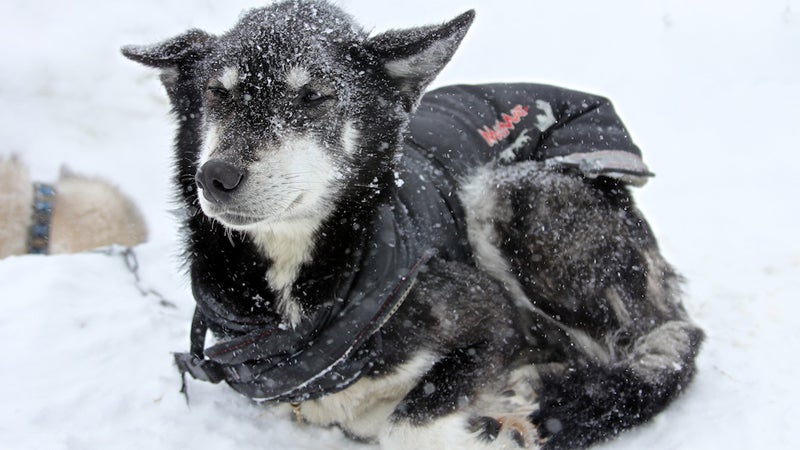Running a 1,000-mile sled dog race across Alaska is no small feat. Like any professional who performs at the highest level, dog mushers must be dedicated and focused in order to be competitive and successful. Raising, training, and racing sled dogs is more than a sport—it's a lifestyle.
As owner and operator of , I live with my dogs in Eureka, a remote Alaskan mining town that’s 150 miles from the nearest city. I’ve traveled through country that’s as rugged as it is beautiful, and I’ve encountered some of the harshest conditions on the planet—including gale-force winds, negative 50-degree temperatures, and freak blizzards.
Having the right equipment is essential to a musher’s success. Here’s a list of the most important gear we use to keep our dogs and ourselves happy, healthy, and safe along the trail.
Race-Mandated Gear
We're required to carry some gear with us at all times: a cold-weather sleeping bag; an axe; a pair of snowshoes; fuel; cooker and pot; and dog booties and harnesses. If I camp along the trail, I need a good sleeping bag, and I’ve found makes a high-quality product.
I use the axe throughout the season to chop meat for the dogs' meals and collect firewood for camp. All mushers carry methanol and a specialized cooker large enough to heat at least three gallons of water. The hot water comes in handy when I need to heat my frozen, vacuum-sealed meals and make the dogs' food. Iditarod mushers are allowed to pick up methanol and water at each checkpoint.
I've rarely used snowshoes during a race, but when I need them to break trail, I’m happy to have them along.
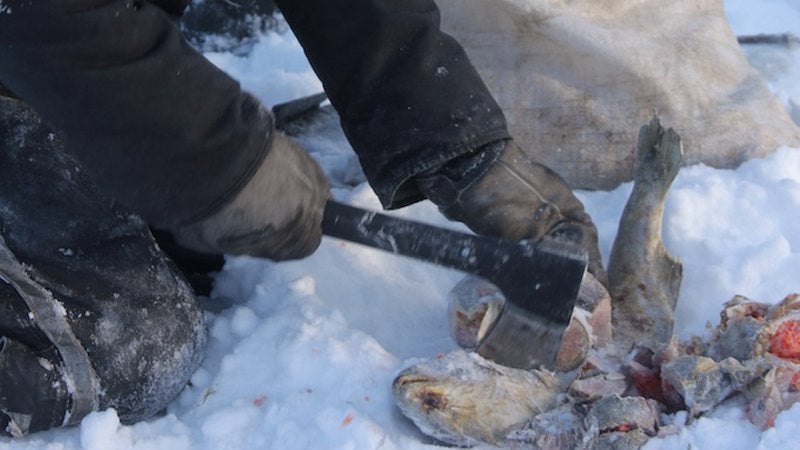
The Sled
The sleds used in the Iditarod need to be lightweight, strong, and durable. We use “runner plastic”—essentially ski wax designed for different temperatures and conditions—on the runners to help the sled glide quickly over the snow.
Every musher has a preferred sled design—some competitors even build their own rigs. Cody Strathe of builds my sleds, which tend to be small and maneuverable.
Small sleds also prevent me from carrying gear I don’t need. All my equipment has to fit in the sled bag, a durable, custom-made pack that attaches to the sled. It stores everything I need. I use a , which I found can withstand a lot of wear and tear.
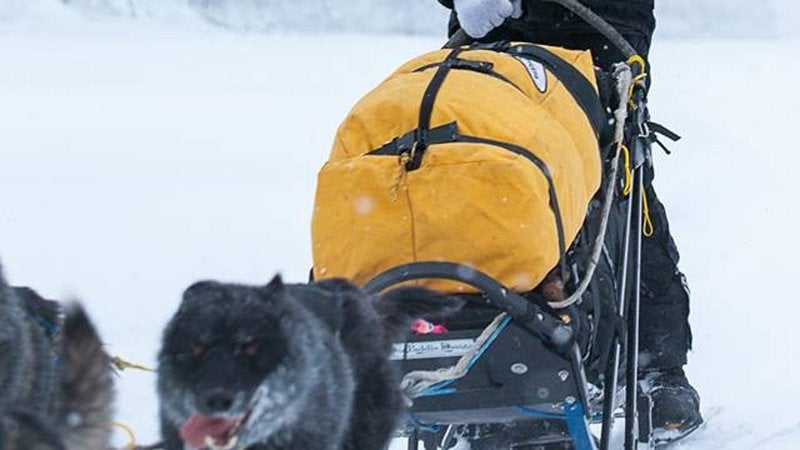
Dog Booties, Jackets, and Harnesses
I pack 3,000 dog booties to run the Iditarod. Made of lightweight cordura, this is easily the most important piece of dog gear I use. Over the course of 1,000 miles, my dogs will race over bare ground, ice, fresh snow, and open water—and booties are the best way to prevent injury.
Harnesses aim to capture as much energy from the dogs as possible while still keeping the animals comfortable. I use the traditional “x-back” style that crisscrosses across the dog’s back.
Finally, there are the dog jackets. I use to help dogs conserve their energy when we’re travelling in extremely cold temperatures. The jackets also keep the pups warm and comfortable when we’re resting for the night.��
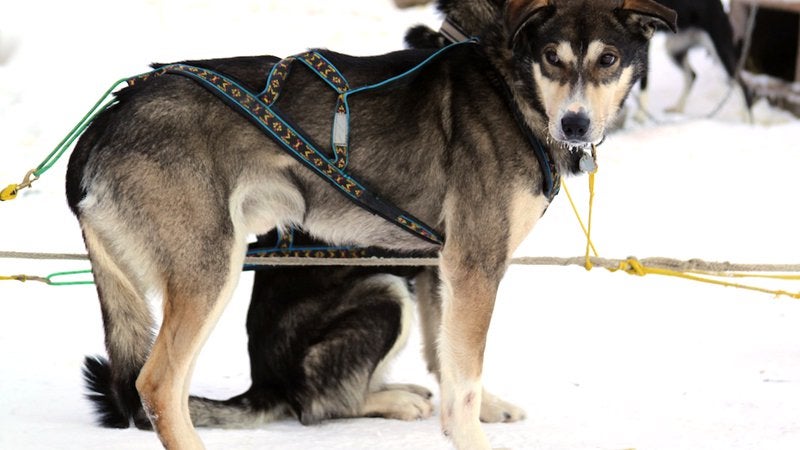
iPod
If this doesn’t sound like essential gear, then you’ve never tried staying awake and focused during a 1,000-mile dog race.
Mushers get very little rest, and there are sections of the Iditarod trail that are extremely monotonous, so most of us carry a music player. You won’t find me out there without an iPod. I listen to music, podcasts, audio books, and even movies to help keep myself entertained.
And while I admit I’m not famous for my vocal talent, I do sing along to the songs. The dogs pick up on the energy you put out, and it helps keep their spirits up, too.
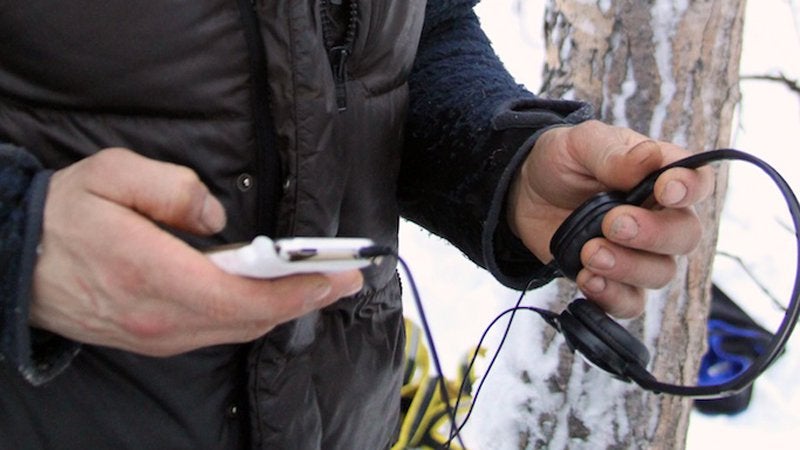
Layers
Every musher wears a wicking next-to-skin base layer. The outer layers come down to personal preference and conditions, and are made from merino, fleece, silk, down, or other synthetic fibers. We need to stay warm and dry, and when we do get soaked in sweat, we need quick-drying gear that will wick the moisture away from our bodies.
My go-to layers are , a one-piece full-body by Carol Davis Sportswear, windstopper fleece shorts, a wool long-sleeve shirt, down vest, down jacket, and a .
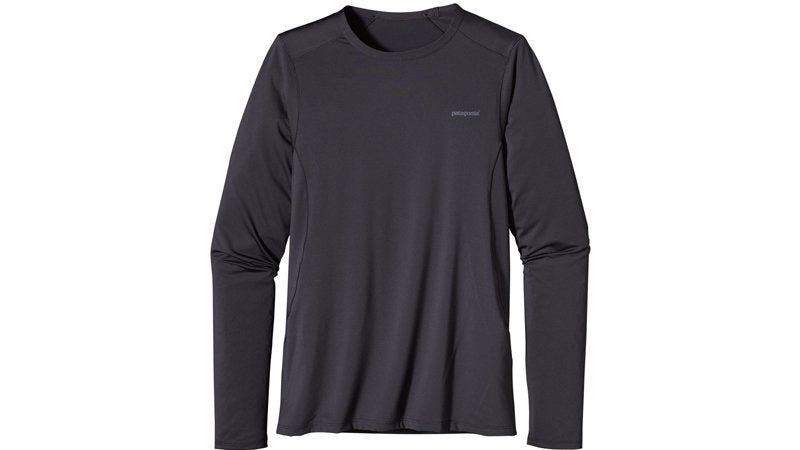
Parka
I wouldn’t survive these races without a good parka—a durable, wind-resistant, well-insulated shell. It’s so vital to the Iditarod that most mushers have these jackets custom-made to fit their exact specifications. I turn to to make my parkas—each of which have a fur ruff.
Sometimes there’s no competing with nature, especially when it comes to warmth. When I need to stay warm in temperatures 50 degrees below zero, I use fur in my jacket from the animals that have evolved to survive these harsh conditions.
Every musher has a fur hat, fur mittens, and a fur parka ruff. You’ll see beaver fur—known for its warmth, softness, and wind- and frost resistance—in the hats, mittens, and parkas of most mushers. You might also spot pelts from muskrats, wolves, and wolverines.
The fur ruff around the hood is the most important piece of the parka because it helps protect and insulate my face. Mushers typically use beaver or wolverine fur to line the inside of the ruff—these materials shed frost—and wolf fur along the outer rim.��
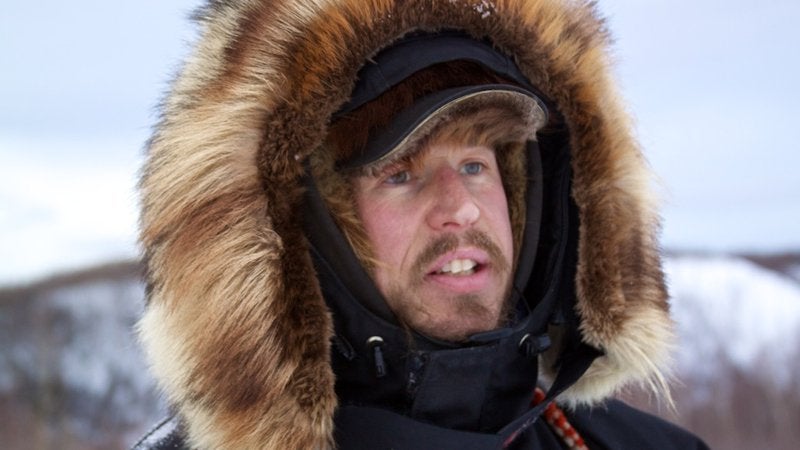
Gloves and Mittens
So how do I keep my hands warm in frigid temperatures? A combination of beaver fur, wool, and hand warmers. For traveling on the trail, there is nothing that compares to the warmth and wind-protection of beaver mitts. Inside of the mittens, mushers usually wear a pair of thick wool or fleece gloves.
When I’m taking care of the dogs—bootying, massaging, snacking, feeding—I need more dexterity, and for those tasks I wear tight-fitting liner gloves, or half-gloves that only cover the palm of my hand. I use hand warmers all the time.��
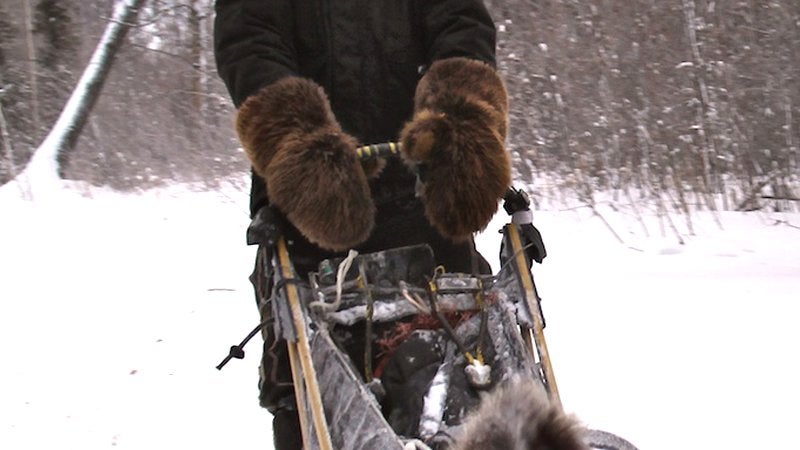
Footwear
In addition to taking care of 64 paws, I have to make sure my feet stay as warm and dry as possible. I'll usually wear a lightweight merino wool liner under thick alpaca socks from .��
Some mushers also pack extra boot liners. There are different boot options, but mainly mushers are looking for efficiency—we need a boot that’s as light as possible while still being warm, durable, and wind- and water-resistant. A thick sole or insole helps insulate our feet from the cold ground. I’ll wear an aftermarket boot liner inside a pair of —a tall felt boot from Norway—which in turn fit inside a pair of .
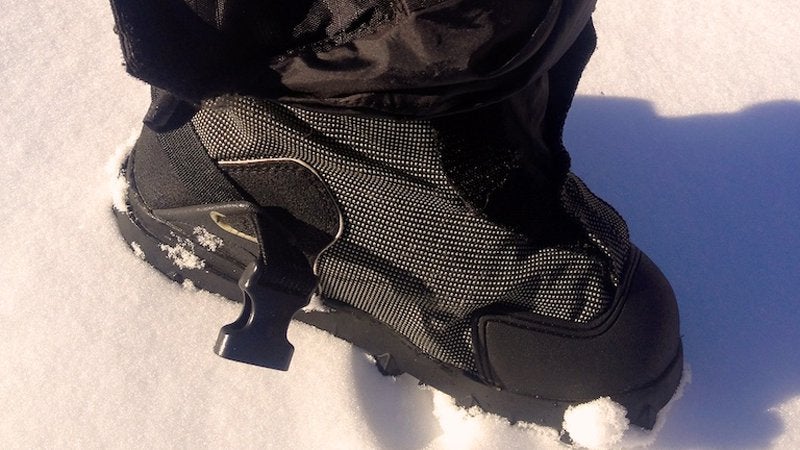
Ski Poles
Toward the end of a race when the teams are moving slower, a musher can help his team by kicking behind the sled or poling. Most mushers carry a sturdy, lightweight ski pole for this purpose.
During the 2014 Yukon Quest, I also discovered that the poles come in handy for fending off moose, although I don’t recommend anyone try that at home.
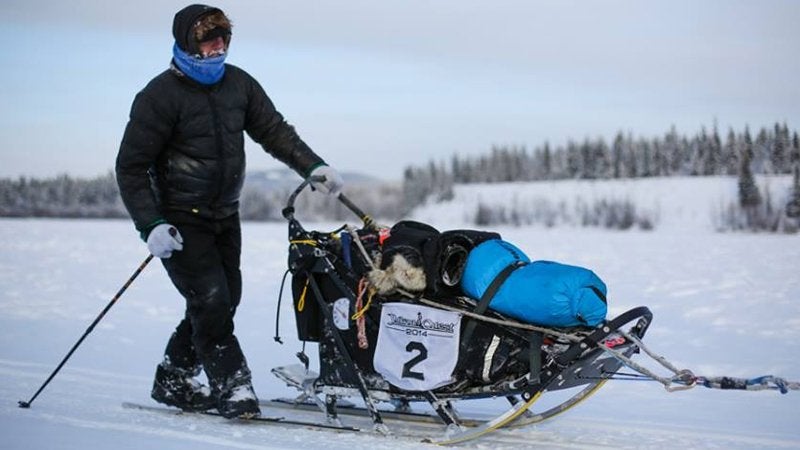
GoPro
I love sharing my races with my fans and friends, so I always carry a GoPro to capture the incredible moments along the way. Enough said.



